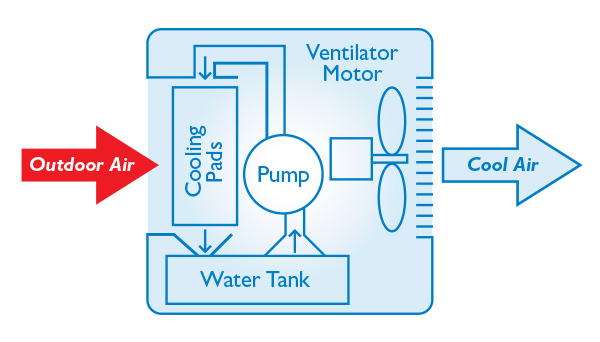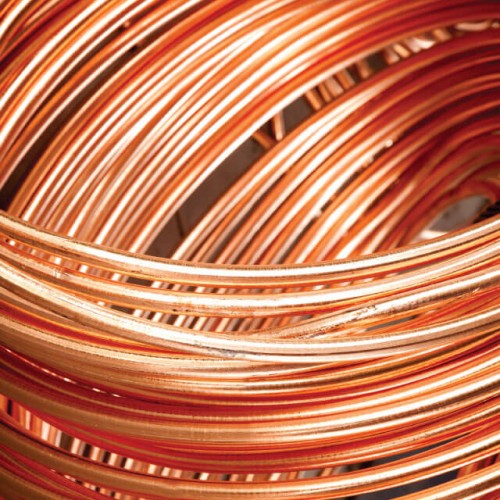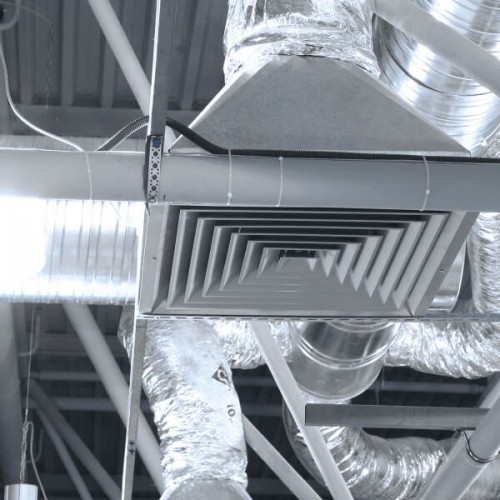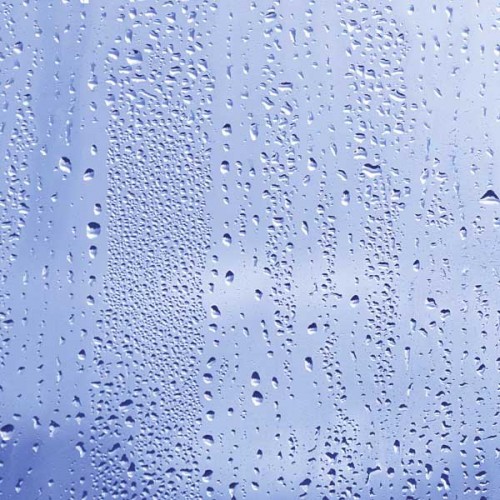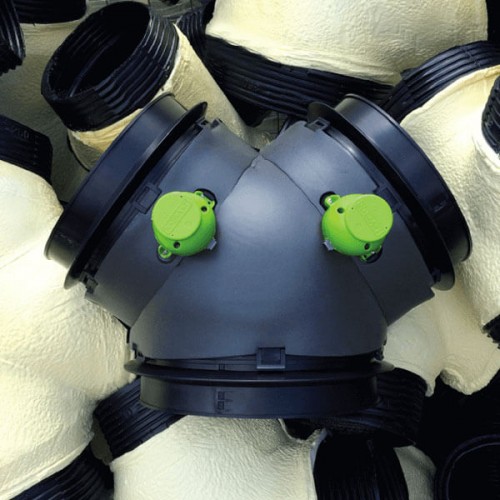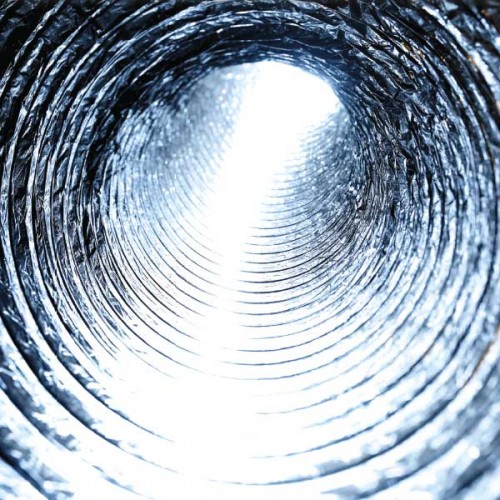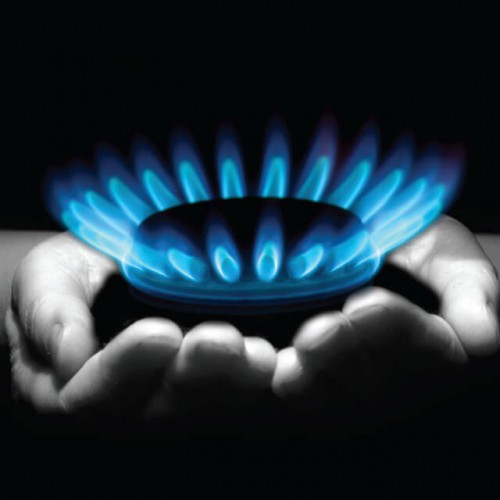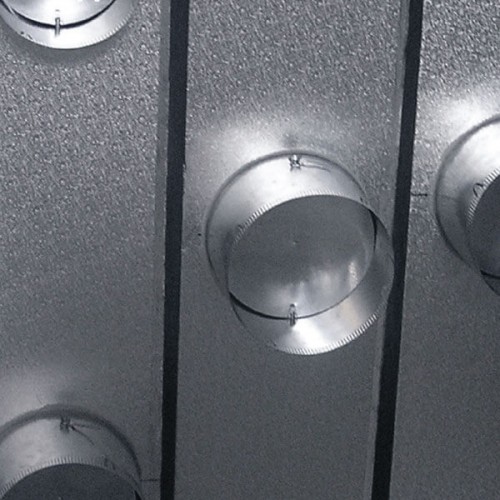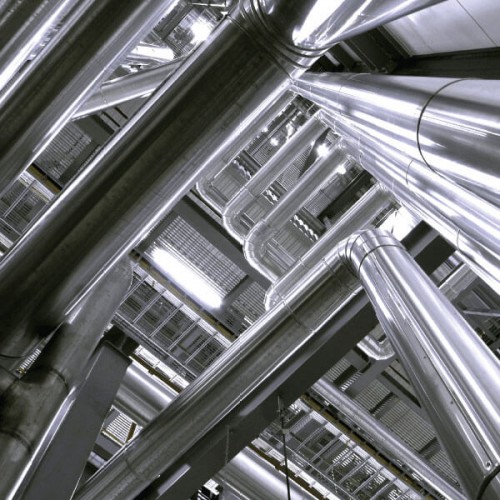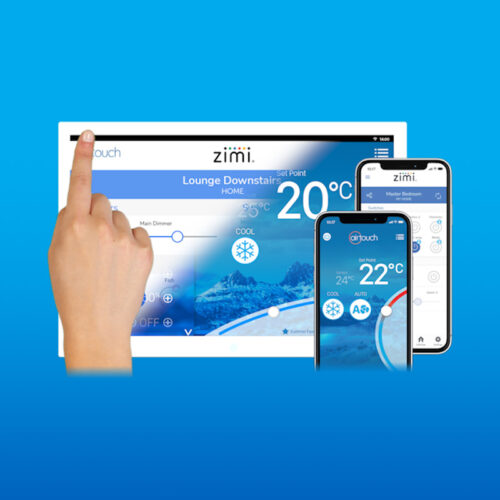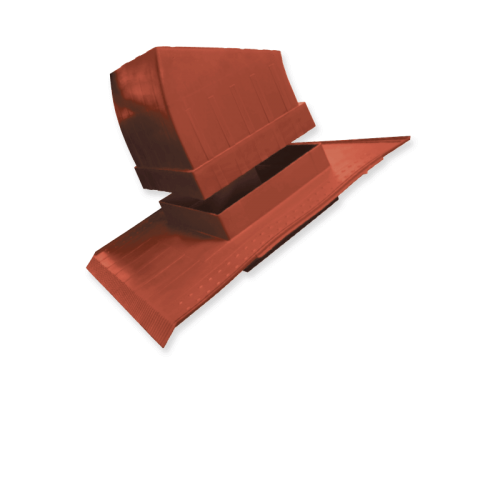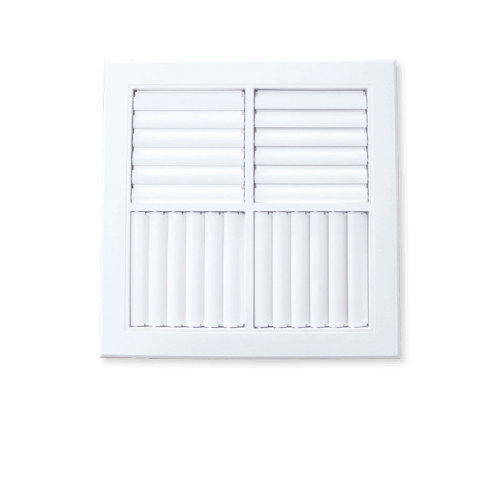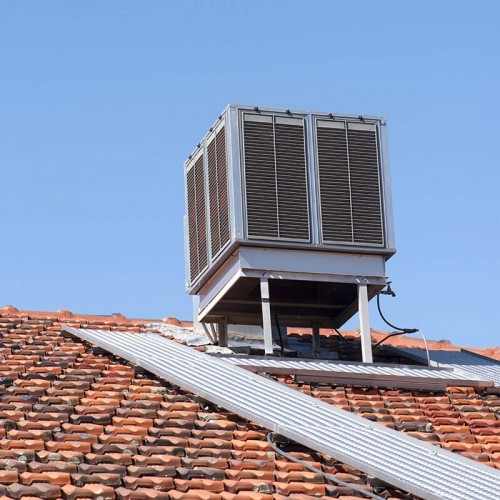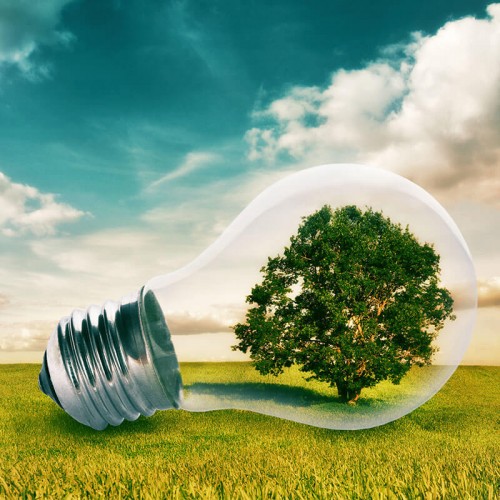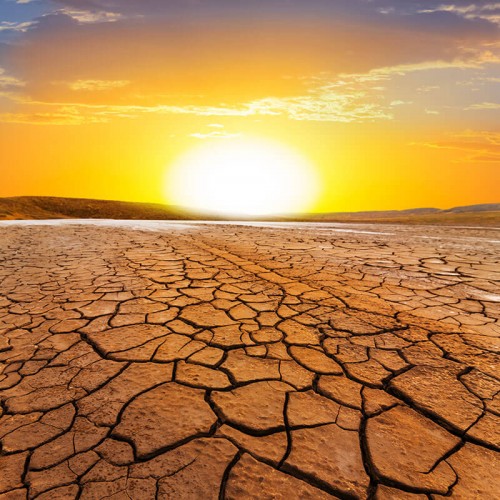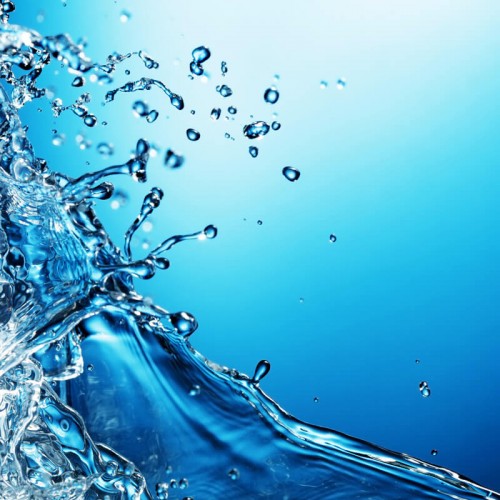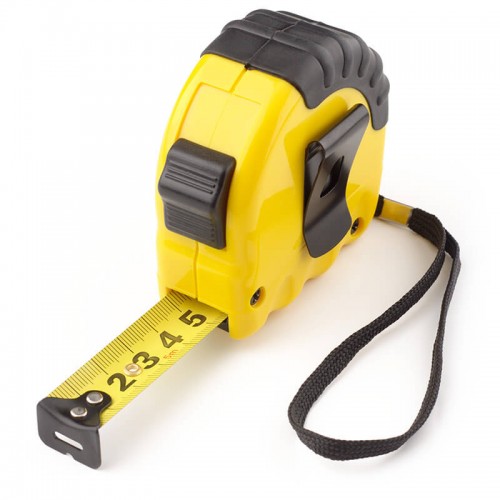What is Evaporative Cooling and How Does it Work?
Evaporative cooling uses water as a cooling agent to lower the temperature of an area. Starting from the reservoir, a pump is used to circulate water onto a cooling pad which subsequently becomes very wet. When that happens, air from outside the unit is drawn through the moistened pad and successively cools the air by evaporation.
To ensure that evaporative cooling works at an optimum level, the cooling pads must be really saturated throughout the operation and the systems fan and motor are designed properly to deliver the right amount of air into the home. The temperature lowers when the water is evaporated and energy is lost from the air.
There are two important temperatures to consider when it comes to evaporative cooling:
- Dry Bulb Temperature: This refers to air temperature measured by a regular thermometer exposed to the air stream.
- Wet Bulb Temperature: This refers to the lowest temperature which can be reached by the evaporation of water only.
When it comes to water evaporating into air, a potential measurement for evaporative cooling is using the wet-bulb temperature. Humidity is also another thing to consider when it comes to evaporation. When the humidity level is below 100%, evaporation starts to take place and the air begins to absorb water. Air can retain up to a certain amount of water vapour and the level of absorption depends on the amount it is already retaining.
We need energy to convert liquid to vapour and we get this energy through an adiabatic process from the air itself. How this works is that air going into the evaporative cooler gives up heat energy to evaporate water. While this process is going on, the dry bulb temperature of the air passing through the cooler is reduced.
Here’s a simple diagram of how evaporative air conditioning works:
